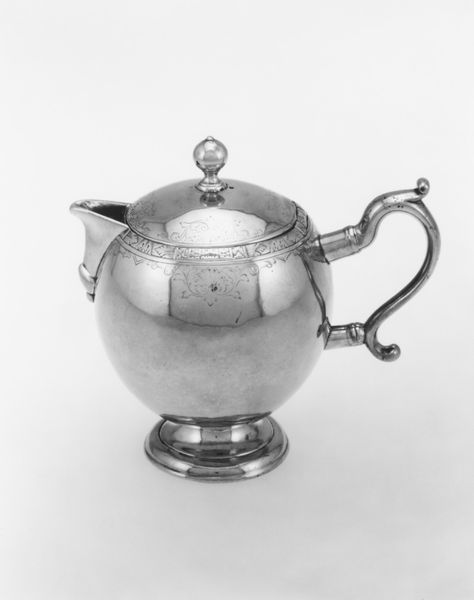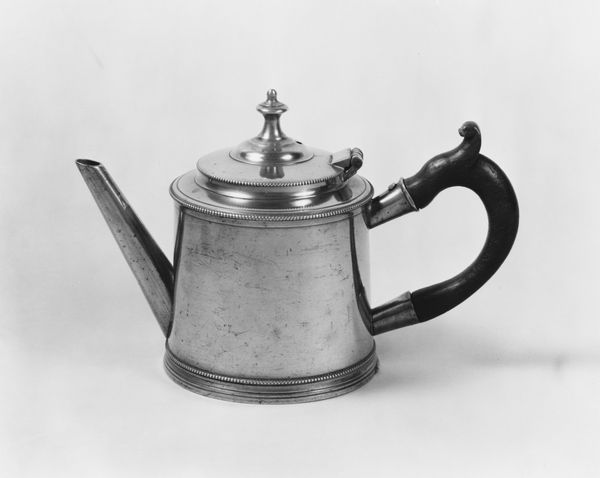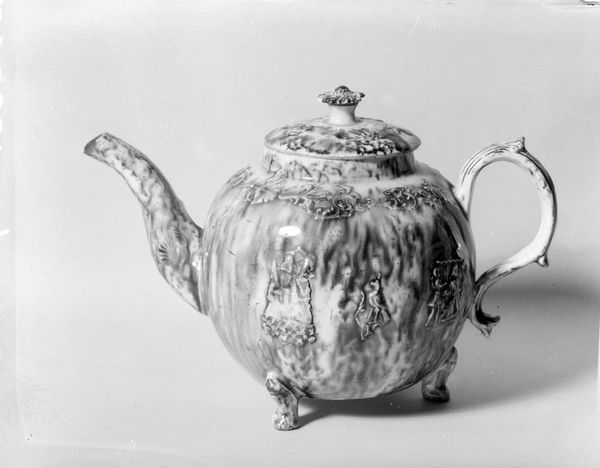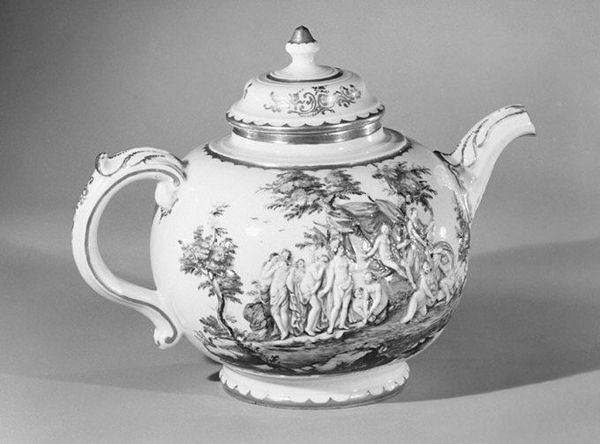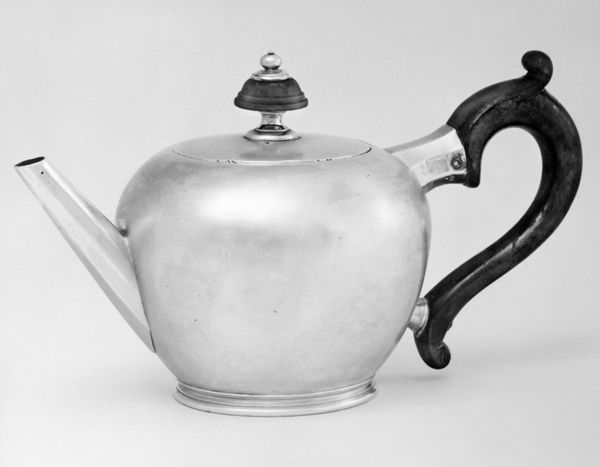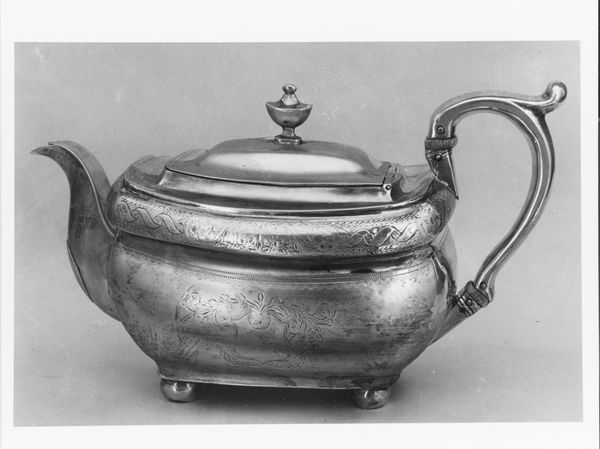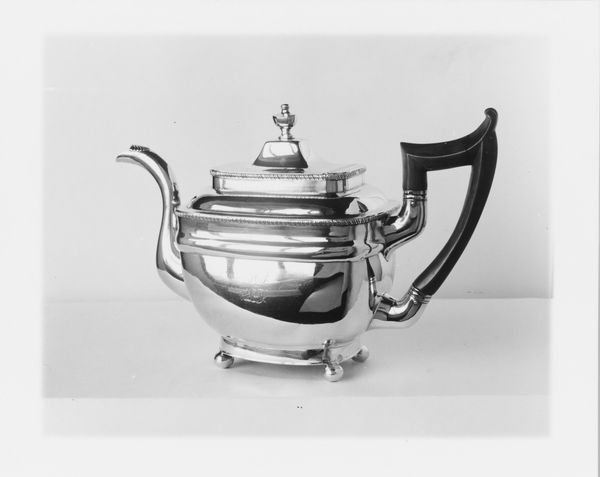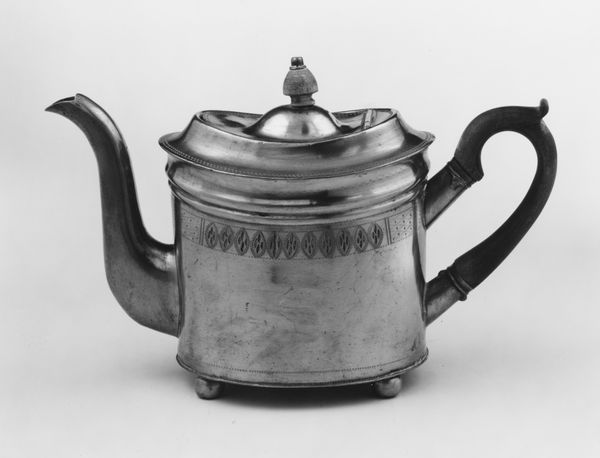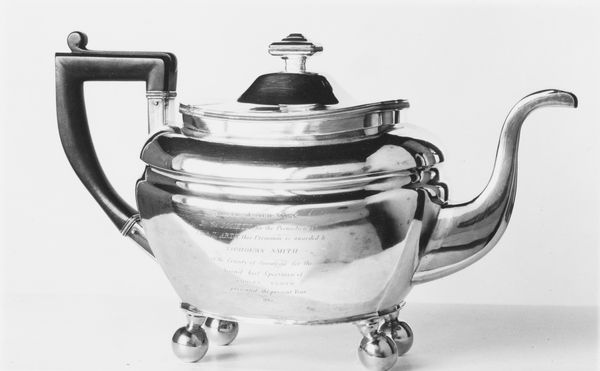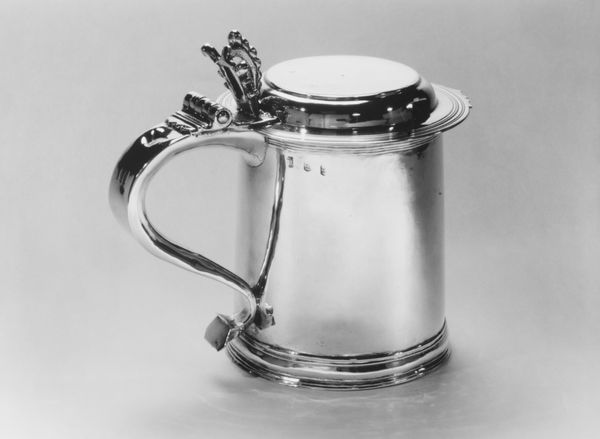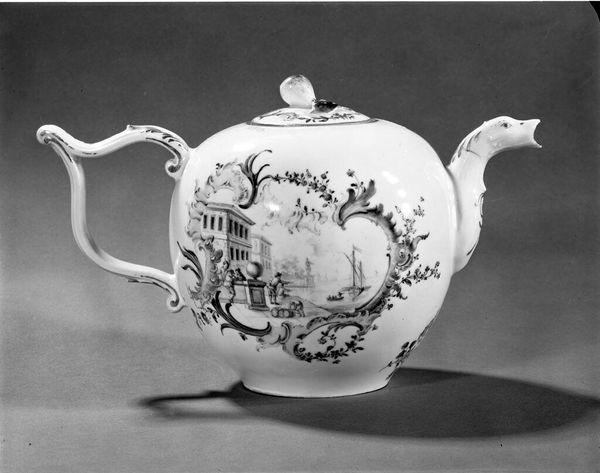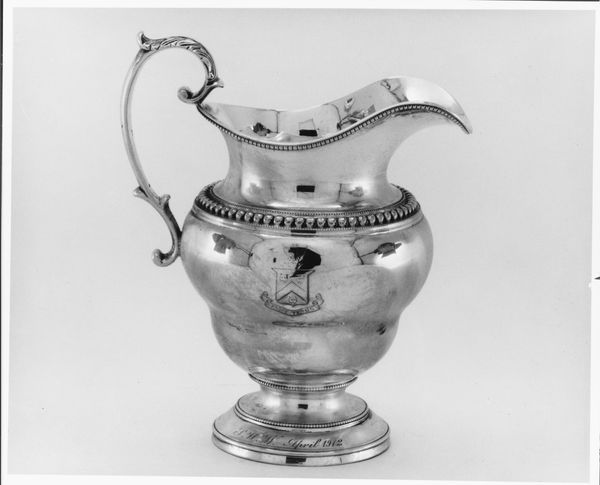
silver, metal, sculpture
#
silver
#
baroque
#
metal
#
sculpture
#
sculpture
#
decorative-art
Dimensions: Height: 4 1/4 in. (10.8 cm)
Copyright: Public Domain
Editor: Here we have a silver teapot, crafted around 1716-1717 by Samuel Margas Jr., currently residing in the Metropolitan Museum of Art. It has such an air of restrained elegance; I find it quite captivating. How do you interpret this work, especially considering its historical context? Curator: It's tempting to simply admire its polished surface, but this teapot invites us to consider the politics brewing within it. What stories does its baroque design conceal? Editor: Politics? Curator: Absolutely! Consider the rise of tea consumption in the 18th century. What social changes did it represent? This seemingly innocuous teapot embodies a shift in social rituals, deeply intertwined with colonialism and global trade routes. How does the ownership of this intricately designed object reinforce existing power structures? Who benefits and who is excluded? Editor: So, it is more than just a decorative object; it is also a symbol of colonialism and power? Curator: Precisely. Silver, as a material, denotes wealth and status. How do we interpret the labour that produced this artefact and who profits from its circulation? It’s about interrogating what that controlled image conceals: forced labor, the displacement of indigenous populations. Does that affect how you view it now? Editor: It does. I will definitely see it differently from now on. The conversation has been extremely insightful, and now I will keep that in mind when I visit museums and see similar works. Curator: I'm glad! That’s precisely what I hope people will consider. It is crucial to examine the complex connections between art and power. It should inspire reflection on art's historical function, and prompt critical investigation.
Comments
No comments
Be the first to comment and join the conversation on the ultimate creative platform.

